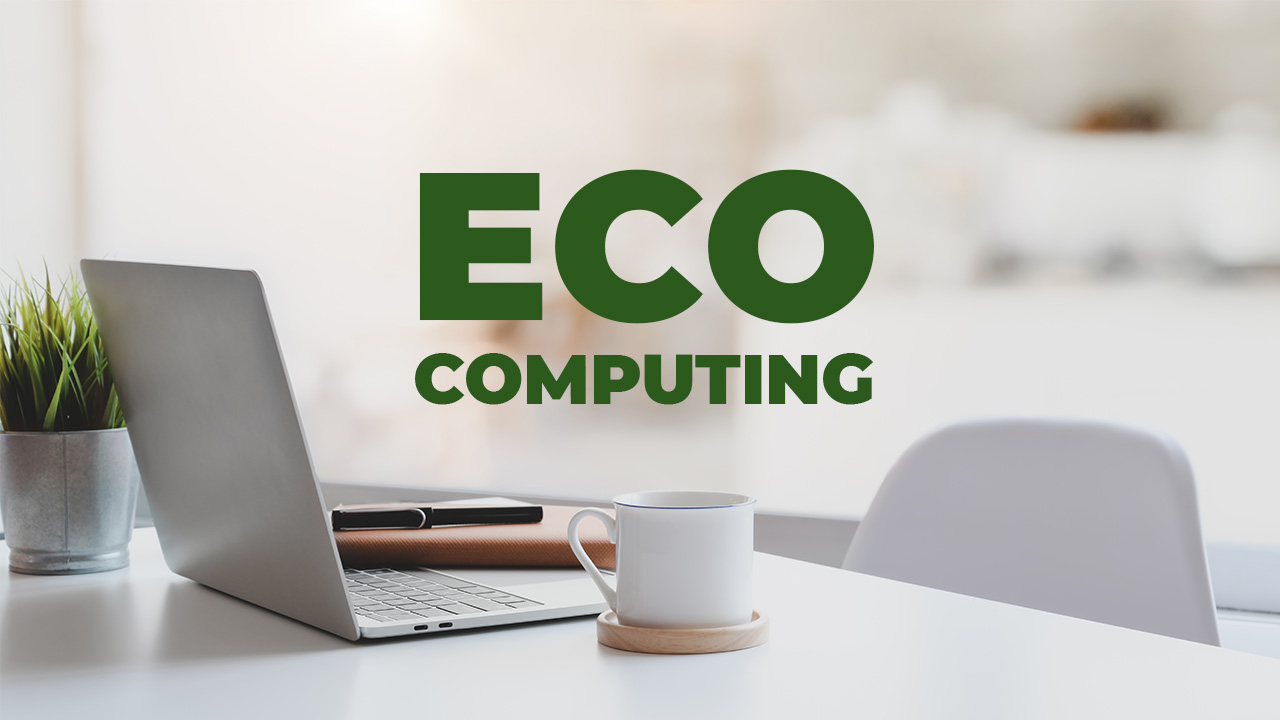Eco computing is about reducing the impact of computing on the environment. However, are we not saving the environment already by replacing physical services with digital? Why do we really need eco computing in the first place? Also, how can organizations benefit by switching to eco computing?
IT is an eco-enabler
The impact on the environment is measured through the carbon dioxide footprint. This CO2 footprint summarizes the net use of resources. For example, if we are running an office, then we are using certain resources like electricity, water etc. Overall, information and communication technologies lead to saving the resources. Therefore, they are lighter on the environment.
Different ways in which it has reduced the carbon footprint:
- Reducing the need of physical travel by replacing the meetings with video conferencing. Also work from home reduces the commutes. Thereby saving on fuel, cost and time. Some of these benefits are enjoyed by the individual. However, firms also benefit.
- Minimizing the use of paper. We all know that paper usually comes from trees. Consequently, less use of paper means that we need to cut down fewer trees.
- Less demand for infrastructural electricity. Going digital and working remotely has other benefits as well. Firstly, we need less electricity for heating, cooling and lighting the office. Secondly, we need lesser energy for running equipment. Thirdly, the need for other support resources is also reduced.
In spite of the benefits of computing, there is still a lot of room for improvement.
The environmental impact of computing
The power consumption of computing may seem trivial at individual level. However, the aggregate power consumption is quite high. In fact, the power consumed by IT systems is around 10% of the total power consumption of the world. Let us put things into perspective. There are only four countries in the world that account for more than 10% power consumption in the world: USA, China, Russia and Japan.
Alternatively, we can evaluate the ecological damage using carbon footprint. The computing systems also accounts for around 2.5% of the total carbon footprint. Again, the number may seem difficult to interpret. The airline industry has a carbon footprint of around 3%. We have plenty of discussion regarding the negative impact of air travel. However, there is little discussion around eco computing.
Finally, IT also creates huge amount of E waste. Some of the common pollutants present in the E waste are:
- Metals like Arsenic, Cadmium and Mercury.
- Plastics
- Other non biodegradable materials.
Challenges towards the eco computing

There is a general consensus towards sustainable use of technology. We are not putting in enough efforts towards eco computing. Here are some of the challenges:
- People are not aware of the impact.
- It is also difficult to link people’s actions towards information technology to the outcomes.
- Corporate commitment is lacking for eco computing
- Senior management participation is also lacking.
Implementing Eco computing in your organization
There are several ways in which you can implement eco computing in an organization. Firstly, we can focus on the procurement process. New acquisitions can be evaluated for ecological considerations. Secondly, we can also optimize the existing processes. This will also reduce the environmental impact. Thirdly, we can also focus on developing a work culture that promotes environmentally friendly practices.
- Procurement practices
- Process optimization
- Work culture
Procurement practices
All technologies have a finite product life. We need to replace old IT devices every few years. This can be a great place to start the process. We can keep some simple concepts in mind to develop a greening strategy for IT procurement:
- Follow eco standards for computing devices – certain ratings like Energy Star come handy in evaluating products that meet energy saving requirements. Also, power supply for servers and desktop computers have energy ratings. The best rating is the gold, followed by silver which is followed by bronze. Although prices are very steep for the gold rated; therefore, silver seem to be sweet spot. Also, the benefits are higher for systems with higher usage than idle times.
- Total Cost of Energy (TCO ) – the computing infrastructure have two types of costs. Firstly, the acquisition cost. This cost is also a fixed cost. On the other hand, we also have cost of running these devices. This is the variable cost. The total cost of ownership considers both these factors. When we keep TCO as an evaluation criterion for procurement rather than the upfront cost, we tend to save more money.
Process optimization
We can also look into the processes to find places where we can cut down the environmental impact. An easy way to think about this would be through the 3R:
- Reduce – Train and educate staff about the benefits of saving energy. Put stickers that encourage people to switch off the computers before leaving. If you want to take things further, you may even incentivize such behavior. Alternatively, you may also penalize non-conformers. Even a simple mail from the seniors can provide good feedback.
- Reuse – Older computers can be reused in two ways. Firstly, you can repurpose them for auxiliary tasks. Older workstations are competent enough for regular tasks like working on word processors and spreadsheet programs. Secondly, you may take help of 3rd party to resell the older devices. These land up on someone’s desk who may not have the privilege to purchase a new device.
- Recycle – finally, recycling can be a great way of looking at eco computing. Firms typically have an e-waste management strategy. You can connect with local authorities or seek help of vendors that specialize in e-waste. One major difference between reusing and recycling is that products that are deemed as not suitable for use are recycled. If they have a work life left and are being replaced due to obsolescence, then they should be reused.
Work culture
Senior executives can promote work culture favoring eco computing. Culture has very strong impact on the behavior of the individuals. It can play a major role in shaping computer usage. It is a myth that screen-savers save energy. In fact, it is just the opposite. Develop a work culture where you need lesser space, lesser cooling or heating. Also encourage employees to work from home.
Another way to promote eco computing is to adopt work from home. There has been an increase in adoption of this practice since the Covid19 outbreak. This trend is expected to continue. However, firms also need to prepare themselves to cater to the infrastructure requirements. An investment into cloud computing saves energy and offsets costs.
